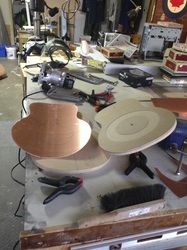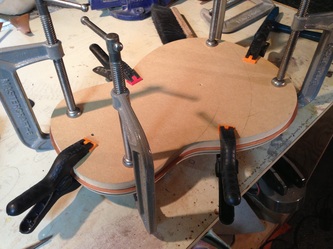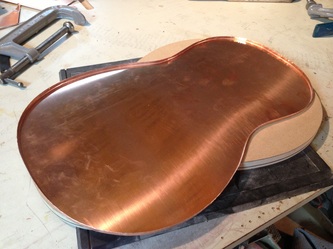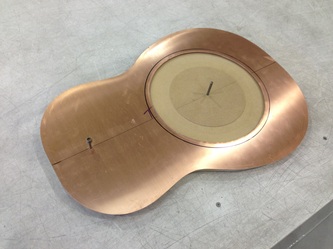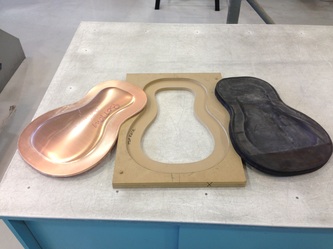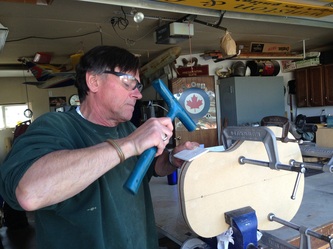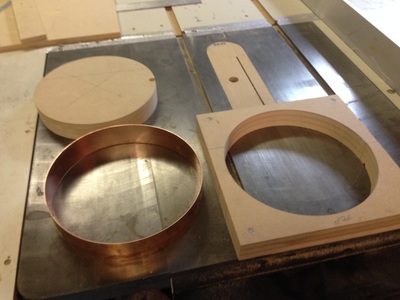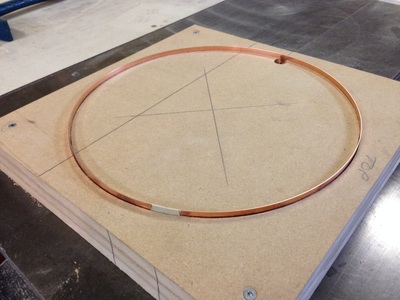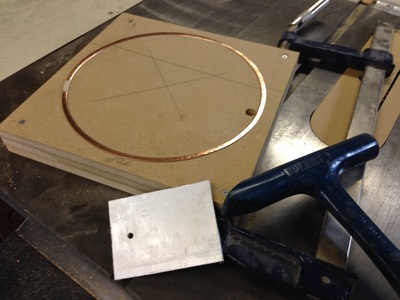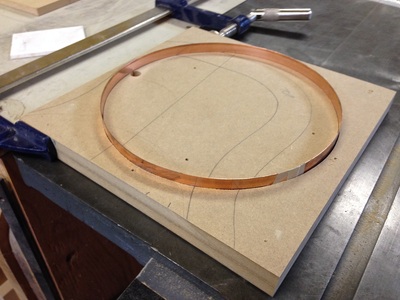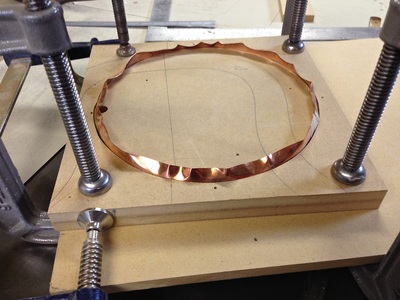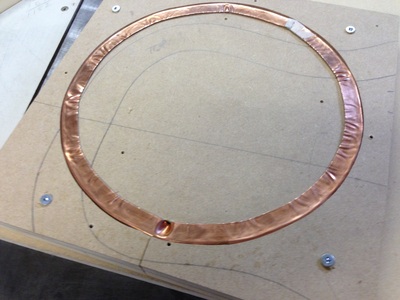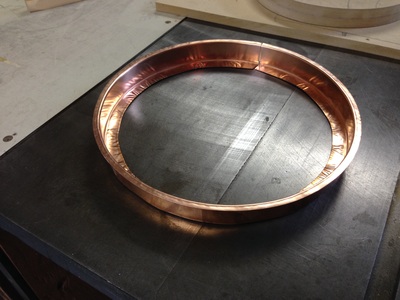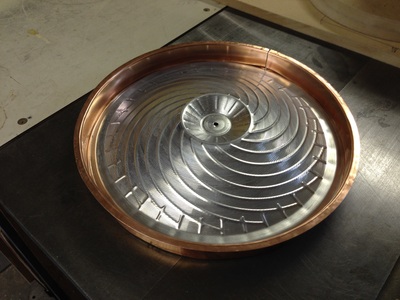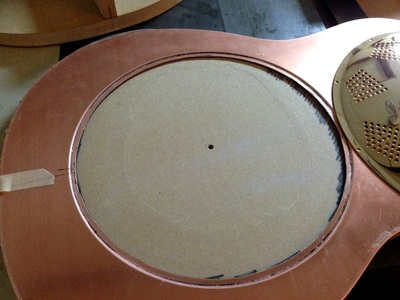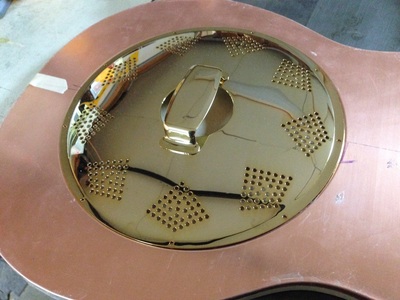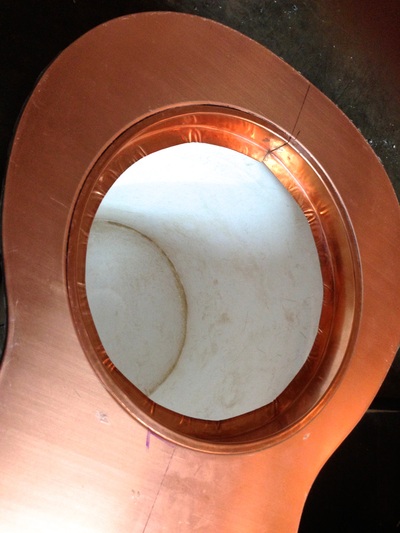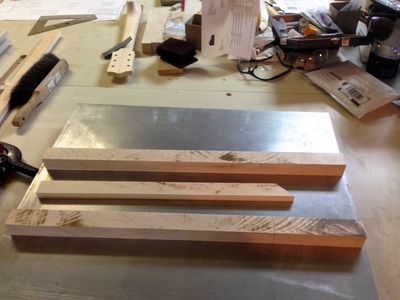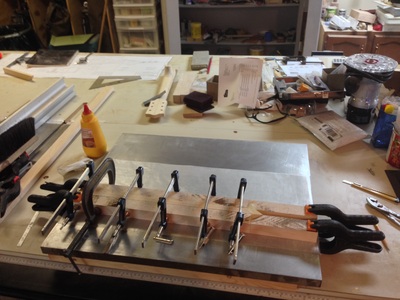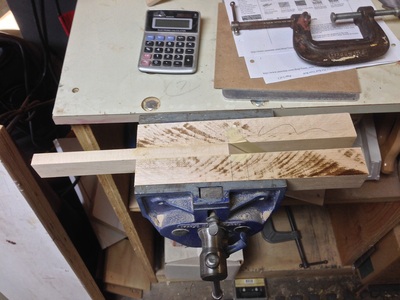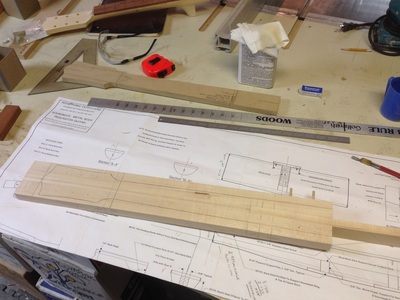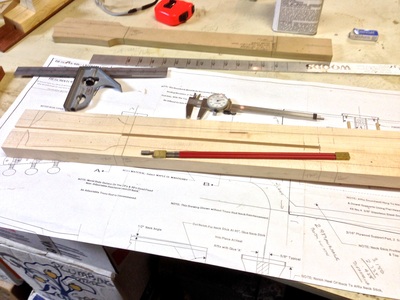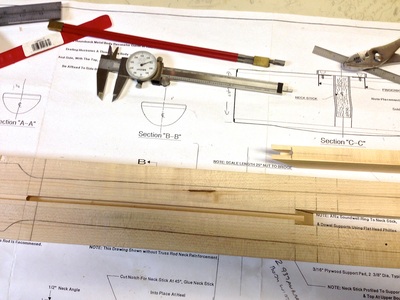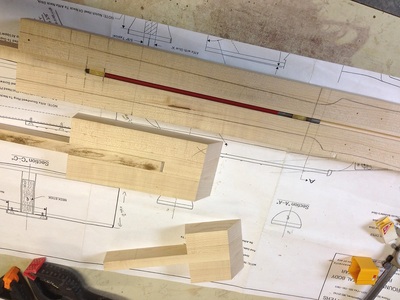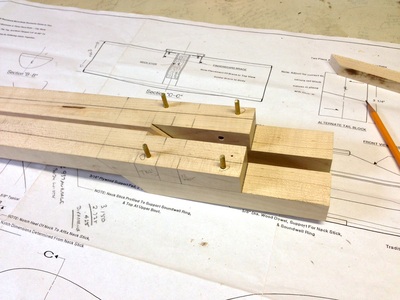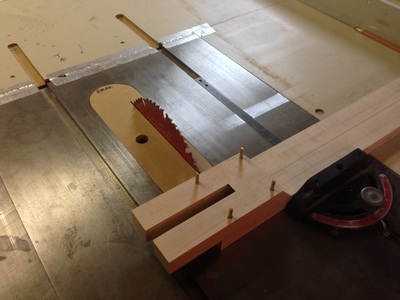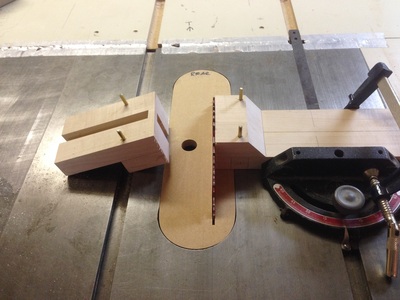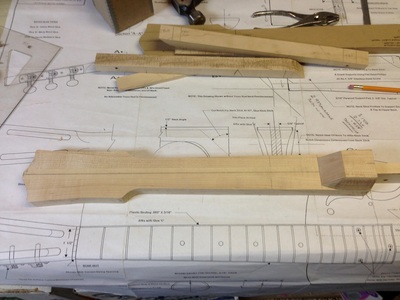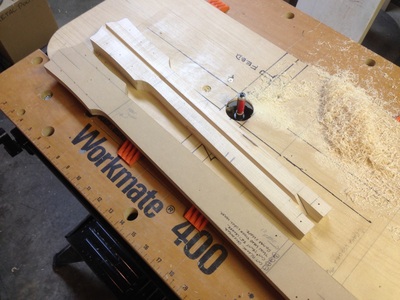And now for something completely different....
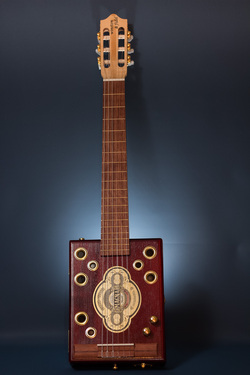
I took a break from the copper resonator to build this one-off 6-string classical cigar box guitar. I've been a fan of
"nuevo flamenco" guitarist Jesse Cook for years. When I heard he was going to perform in nearby Red Deer, I decided to try to build a guitar specifically for him. I had the pleasure of presenting it to him at his sound check.
Here are the details of the build:
The fretboard and bridge are made from Bubinga wood, which comes from Africa. The neck is maple.
I must have been serious about building this, because I've never drawn plans for a guitar before. It took all of January to build.
"nuevo flamenco" guitarist Jesse Cook for years. When I heard he was going to perform in nearby Red Deer, I decided to try to build a guitar specifically for him. I had the pleasure of presenting it to him at his sound check.
Here are the details of the build:
The fretboard and bridge are made from Bubinga wood, which comes from Africa. The neck is maple.
I must have been serious about building this, because I've never drawn plans for a guitar before. It took all of January to build.
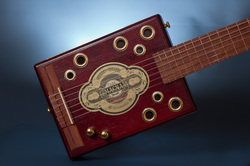
This close-up of the guitar body shows the Bubinga bridge, featuring a bone saddle. This guitar has a volume control; the second knob is a fader which controls the two Piezo pickups, allowing you to play the bridge or the neck independently, or combine the two to get the sound that you want.
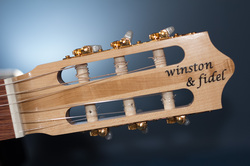
I made the tuner head the way I usually do, not following the traditional classical two-piece neck and tuner head. I was able to achieve very effective string break over the bone nut.
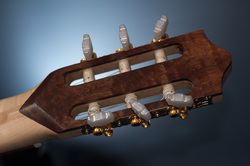
The back of the tuner head. The dark wood is a mystery wood that I had in my shop; it looked pretty, so I used it.
Jesse Cook:
I'm an aircraft metal worker by trade, and thought that making a metal resonator guitar would be fun. Instead of the usual steel or brass, I decided to make it out of copper, which supposedly will give it a deeper tone (and besides, I had lots of copper kicking around).
I will post pictures as the project progresses. You can also follow it on the Winston and Fidel Facebook page. While there, please feel free to comment on what you see. I'm happy to answer any questions as well as listen to advice!
For the photos below, just click on the text to see the picture and read the write-up.
I will post pictures as the project progresses. You can also follow it on the Winston and Fidel Facebook page. While there, please feel free to comment on what you see. I'm happy to answer any questions as well as listen to advice!
For the photos below, just click on the text to see the picture and read the write-up.
